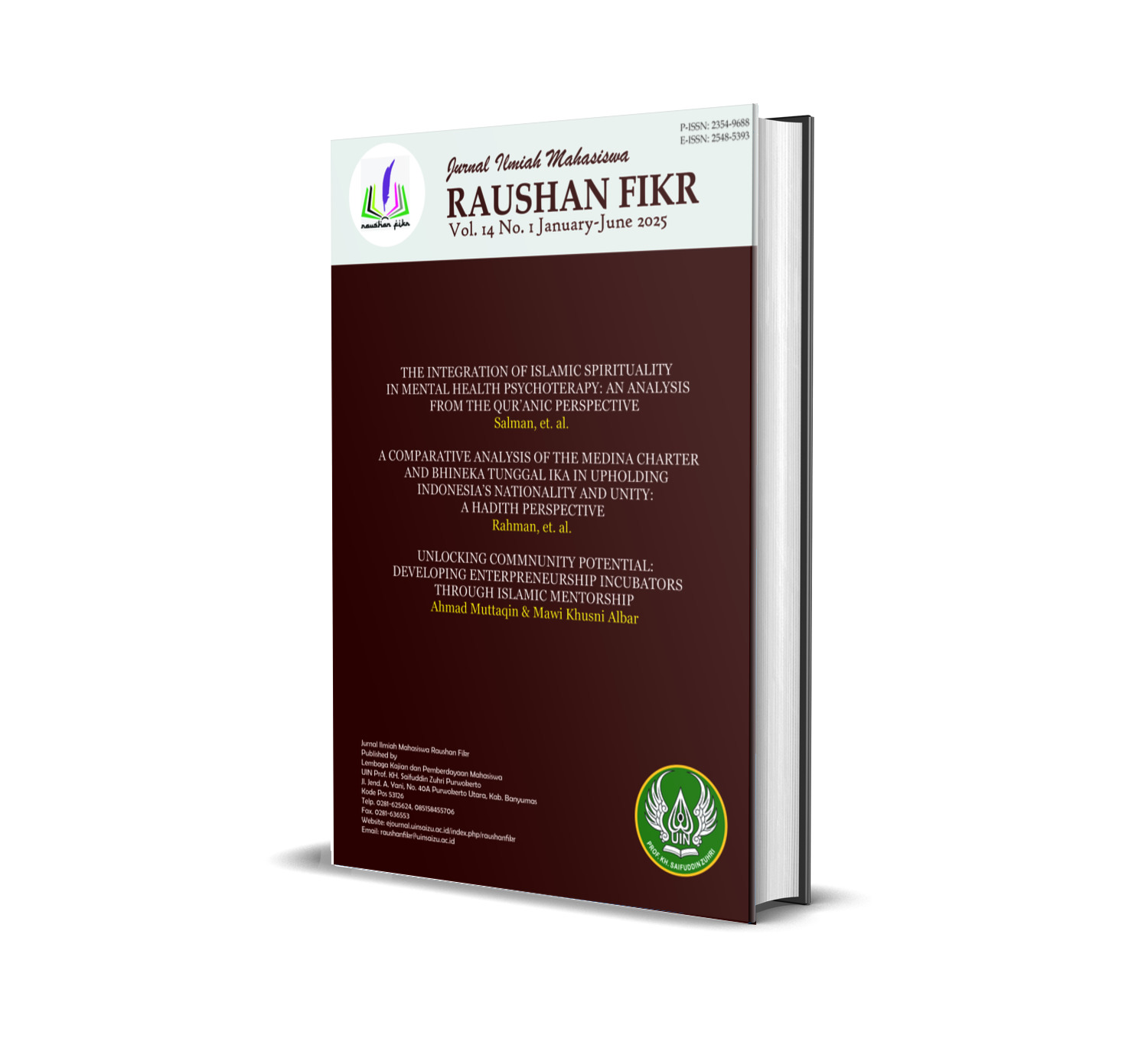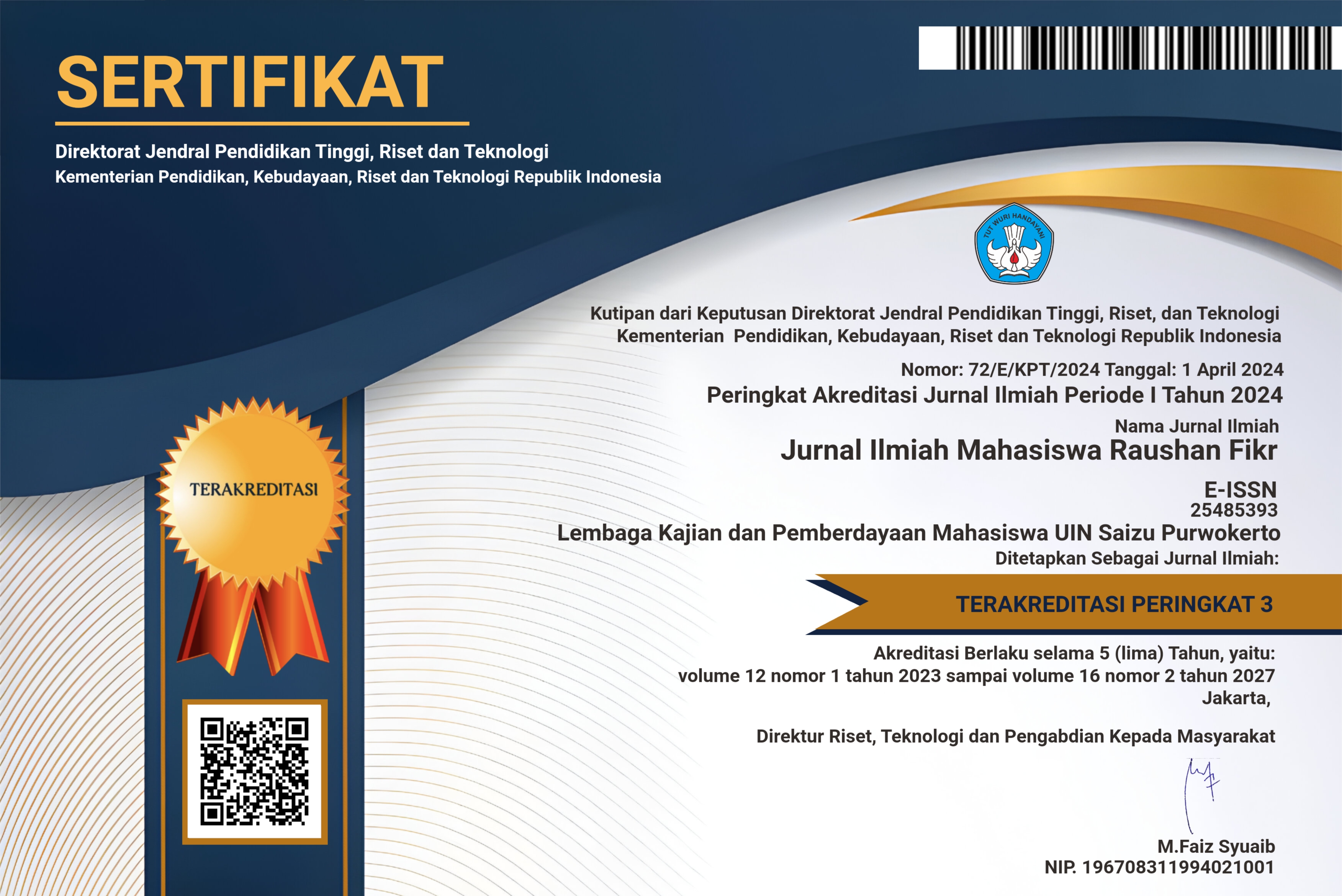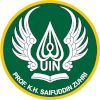Natural Conservation and Its Link to Disasters: How Does the Qur’anic Interpretation of Surah Al-A’raf (Verses 56-58) Offer Insights?
DOI:
https://doi.org/10.24090/jimrf.v14i1.12983Keywords:
Islamic environmental ethics, conservation, natural disasters, surah al-a’raf, interdisciplinary analysisAbstract
This study explores the correlation between environmental conservation and natural disasters through an interdisciplinary analysis of Surah Al-A’raf verses 56-58 and scientific data on environmental degradation. Employing a qualitative approach, the research delves into classical and contemporary Qur’anic interpretations, including Tafsir Ibnu Katsir and Tafsir Al-Mishbah, to elucidate the theological principles of stewardship (khalifah) and balance (mizan). Empirical data from authoritative sources such as the Intergovernmental Panel on Climate Change (IPCC) and the Food and Agriculture Organization (FAO) are incorporated to demonstrate how anthropogenic environmental damage—such as deforestation and pollution—is closely linked to the increasing frequency of natural disasters. Case studies from Indonesia, particularly reforestation programs spearheaded by Islamic organizations such as Nahdlatul Ulama, serve to illustrate the practical implementation of Islamic environmental ethics. The findings underscore that integrating Islamic teachings with scientific insights provides a comprehensive and holistic strategy for addressing ecological crises and mitigating disasters, emphasizing the pivotal role of conservation within both spiritual and scientific paradigmsDownloads
References
Ahmad, M. (2020). Al-qur’an dan wawasan ekologi. Al-Dzikra Jurnal Studi Ilmu Al-Qur an Dan Al-Hadits, 14(2), 333-358. https://doi.org/10.24042/al-dzikra.v14i2.7442
Asano, T., Kokusho, D., & Yamamoto, Y. (2013). Coastal trees as a tsunami barrier structure - their morphology and hydraulic resistance. https://doi.org/10.1142/9789814412216_0111
Bremner, J., Petus, C., Dolphin, T., Hawes, J., & Beguet, B. (2023). A seagrass mapping toolbox for south pacific environments. Remote Sensing, 15(3), 834. https://doi.org/10.3390/rs15030834
Bsoul, L., Omer, A., Kucukalic, L., & Archbold, R. (2022). Islam’s perspective on environmental sustainability: a conceptual analysis. Social Sciences, 11(6), 228. https://doi.org/10.3390/socsci11060228
Chan-Bagot, K. (2024). Integrating sar, optical, and machine learning for enhanced coastal mangrove monitoring in guyana. Remote Sensing, 16(3), 542. https://doi.org/10.3390/rs16030542
Chatting, M., Al-Maslamani, I., Walton, M., Skov, M., Kennedy, H., Hüsrevoğlu, Y., … & Vay, L. (2022). Future mangrove carbon storage under climate change and deforestation. Frontiers in Marine Science, 9. https://doi.org/10.3389/fmars.2022.781876
Cong, N. and Thao, H. (2023). Farming practices and environmental quality of integrated mangrove-shrimp farming systems in tra vinh province, vietnam. Journal of Coastal Research, 39(4). https://doi.org/10.2112/jcoastres-d-22-00075.1
Gada, M. (2024). Islam and environmental ethics. https://doi.org/10.1017/9781009308236
Gulzar, A., Islam, T., Khan, M., & Haq, S. (2021). Environmental ethics towards sustainable development in islamic perspective. Ethnobotany Research and Applications, 22. https://doi.org/10.32859/era.22.39.1-10
Harefa, M. (2024). Floristic diversity of mangrove restoration area: a case study in pasar rawa, north sumatra. Jurnal Sylva Lestari, 12(1), 158-169. https://doi.org/10.23960/jsl.v12i1.824
Kurniati, N. (2023). Pandangan islam terhadap upaya pelestarian lingkungan. Mauriduna Journal of Islamic Studies, 4(2), 212-220. https://doi.org/10.37274/mauriduna.v4i2.842
Köhrsen, J. (2021). Muslims and climate change: how islam, muslim organizations, and religious leaders influence climate change perceptions and mitigation activities. Wiley Interdisciplinary Reviews Climate Change, 12(3). https://doi.org/10.1002/wcc.702
Lan, B., Phuong, T., Đạt, T., & Truong, D. (2023). Payment for urban mangrove forest conservation in vietnam: a community case study of can gio biosphere reserve, ho chi minh city. Sustainability, 15(13), 10299. https://doi.org/10.3390/su151310299
Lansakara, D. (2023). The potential for community-driven ecosystem-based disaster risk reduction in south asia: a literature review. Disaster Prevention and Management an International Journal, 33(2), 78-97. https://doi.org/10.1108/dpm-06-2023-0128
Latif, M. (2023). Environmental theology and its relevance to islamic law: perception of makassar muslim scholars, indonesia. Samarah Jurnal Hukum Keluarga Dan Hukum Islam, 7(3), 1734. https://doi.org/10.22373/sjhk.v7i3.18905
Maslani, M. (2023). Ecopedagogy in action: an ethnographic exploration of environmental preservation strategies in pesantren. Jurnal Pendidikan Islam, 9(2), 211-222. https://doi.org/10.15575/jpi.v9i2.29347
McKay, J., Bahagia, B., Dinata, Y., Harrop, S., & Khalid, F. (2013). Practise what you preach: a faith-based approach to conservation in indonesia. Oryx, 48(1), 23-29. https://doi.org/10.1017/s0030605313001087
Menéndez, P., Losada, Í., Torres-Ortega, S., Narayan, S., & Beck, M. (2020). The global flood protection benefits of mangroves. Scientific Reports, 10(1). https://doi.org/10.1038/s41598-020-61136-6
Mohamad, A. and Ismail, N. (2023). Environmental preservation and water pollution from the islamic perspective. Samarah Jurnal Hukum Keluarga Dan Hukum Islam, 7(2), 997. https://doi.org/10.22373/sjhk.v7i2.16019
Mohidem, N. and Hashim, Z. (2023). Integrating environment with health: an islamic perspective. Social Sciences, 12(6), 321. https://doi.org/10.3390/socsci12060321
Mukhlis, F. (2022). Paradigma ekologis dalam tafsir al-qur’an. Qof, 6(1), 89-108. https://doi.org/10.30762/qof.v6i1.396
Mustolikh, M., Budimansyah, D., Darsiharjo, D., & Nurdin, E. (2022). Bencana alam dan etika lingkungan hidup dalam al-qur’an. Proceedings Series on Social Sciences & Humanities, 6, 170-176. https://doi.org/10.30595/pssh.v6i.459
Pandikar, E. (2024). Harmonizing economic principles, islamic values, and entrepreneurial attitudes for a sustainable environment. Yupa Historical Studies Journal, 6(2), 188-197. https://doi.org/10.30872/yupa.v6i2.3739
Pandikar, E. (2024). Harmonizing economic principles, islamic values, and entrepreneurial attitudes for a sustainable environment. Yupa Historical Studies Journal, 6(2), 188-197. https://doi.org/10.30872/yupa.v6i2.3739
Pandikar, E. (2024). Harmonizing economic principles, islamic values, and entrepreneurial attitudes for a sustainable environment. Yupa Historical Studies Journal, 6(2), 188-197. https://doi.org/10.30872/yupa.v6i2.3739
Pandikar, E. (2024). Harmonizing economic principles, islamic values, and entrepreneurial attitudes for a sustainable environment. Yupa Historical Studies Journal, 6(2), 188-197. https://doi.org/10.30872/yupa.v6i2.3739
Rahman, N., Zabidi, F., Othman, M., Halim, L., Iksan, Z., & Abdullah, W. (2019). Conceptual framework for integration of tauhidic elements for environmental conservation (tefec): a review. International Journal of Academic Research in Progressive Education and Development, 8(3). https://doi.org/10.6007/ijarped/v8-i3/6265
Rahman, N., Zabidi, F., Othman, M., Halim, L., Iksan, Z., & Abdullah, W. (2019). Conceptual framework for integration of tauhidic elements for environmental conservation (tefec): a review. International Journal of Academic Research in Progressive Education and Development, 8(3). https://doi.org/10.6007/ijarped/v8-i3/6265
Rizvi, A. (2010). Islamic environmental ethics and the challenge of anthropocentrism. American Journal of Islam and Society, 27(3), 53-78. https://doi.org/10.35632/ajis.v27i3.366
Rizvi, A. (2010). Islamic environmental ethics and the challenge of anthropocentrism. American Journal of Islam and Society, 27(3), 53-78. https://doi.org/10.35632/ajis.v27i3.366
Rohmatulloh, R. (2023). Energy-saving triangle: internalizing islamic ethical values on energy saving in integrative learning. Religions, 14(10), 1284. https://doi.org/10.3390/rel14101284
Safe’i, R., Kaskoyo, H., & Ardiansyah, F. (2022). Trend analysis of mangrove forest health in east lampung regency as community preparedness for natural disasters. International Journal of Design & Nature and Ecodynamics, 17(6), 943-949. https://doi.org/10.18280/ijdne.170616
Salehzadeh, R., Sayedan, M., Mirmehdi, S., & Aqagoli, P. (2021). Elucidating green branding among muslim consumers: the nexus of green brand love, image, trust and attitude. Journal of Islamic Marketing, 14(1), 250-272. https://doi.org/10.1108/jima-08-2019-0169
Sayem, M. (2021). Islam and environmental ethics. Islamic Studies, 60(2), 157-172. https://doi.org/10.52541/isiri.v60i2.1438
Setianingrum, D. (2024). Environmental education through islamic lens: values and practices. E3s Web of Conferences, 482, 04014. https://doi.org/10.1051/e3sconf/202448204014
Solihu, A. (2014). Valuing biodiversity: a qur’anic account. International Journal of Environmental Science and Development, 5(3), 244-250. https://doi.org/10.7763/ijesd.2014.v5.486
Su, J., Friess, D., & Gasparatos, A. (2021). A meta-analysis of the ecological and economic outcomes of mangrove restoration. Nature Communications, 12(1). https://doi.org/10.1038/s41467-021-25349-1
Tang, M. (2024). Analyzing disaster mitigation policies in japan and china from an eco-drr perspective: a comparative study of shanghai and tokyo. Journal of Architectural Research and Development, 8(1), 14-19. https://doi.org/10.26689/jard.v8i1.5917
Uribe-Castañeda, N., Satizabal, C., Herrera-Orozco, L., & Kintz, J. (2020). Vulnerabilidad de los servicios ecosistémicos del área marina protegida uramba. Boletín De Investigaciones Marinas Y Costeras, 49(SuplEsp), 95-118. https://doi.org/10.25268/bimc.invemar.2020.49.suplesp.1055
Utami, W., Wibowo, Y., Hadi, A., & Permadi, F. (2021). The impact of mangrove damage on tidal flooding in the subdistrict of tugu, semarang, central java. Journal of Degraded and Mining Lands Management, 9(1), 3093-3105. https://doi.org/10.15243/jdmlm.2021.091.3093
Vieira, J., Salgueiro, J., Soares, A., Azeiteiro, U., & Morgado, F. (2019). An integrated approach to assess the vulnerability to erosion in mangroves using gis models in a tropical coastal protected area. International Journal of Climate Change Strategies and Management, 11(2), 289-307. https://doi.org/10.1108/ijccsm-05-2017-0110
Wahyuni, A. (2024). Kesadaran ekologis; pelestarian lingkungan dalam al-qur’an. Al-Mutsla, 6(1), 125-139. https://doi.org/10.46870/jstain.v6i1.963
Wati, E. and Al-Ma’mun, H. (2022). The ethics of protecting environment ibn khaldun perspective’s: analysis of exegesis maqasidi’s qs. al-a’raf verse 56. Aqwal Journal of Qur an and Hadis Studies, 3(2), 163-174. https://doi.org/10.28918/aqwal.v3i2.3494
Yunus, E., Andika, A., Yani, A., Nisa, M., & Muhammad, H. (2021). Revitalisasi tafsir ekologi pada kandungan surat al-a’raf [7] ayat 56-58 dalam rencana penanaman pohon trembesi di lingkungan uin walisongo semarang. Jurnal Riset Agama, 1(3), 112-131. https://doi.org/10.15575/jra.v1i3.15112
Yusuf, M. and Marjuni, K. (2023). Environmental ethics from perspective of the quran and sunnah. Religia, 25(2), 246-263. https://doi.org/10.28918/religia.v25i2.5916
Yusuf, M. and Marjuni, K. (2023). Environmental ethics from perspective of the quran and sunnah. How Does Environmental Conservation Contribute to Disaster Prevention? An Islamic and Scientific Perspective Religia, 25(2), 246-263. https://doi.org/10.28918/religia.v25i2.5916
Yusuf, M. and Marjuni, K. (2023). Environmental ethics from perspective of the quran and sunnah. Religia, 25(2), 246-263. https://doi.org/10.28918/religia.v25i2.5916
al., I. (2023). The role of islamic environmental ethics in the alleviation of climate challenges and the preservation of ecosystem. Russian Law Journal, 11(11s). https://doi.org/10.52783/rlj.v11i11s.1967
Downloads
Published
How to Cite
Issue
Section
License
Copyright (c) 2025 Muhammad Hafizh Ridho, Ardiansyah

This work is licensed under a Creative Commons Attribution-NonCommercial-ShareAlike 4.0 International License.
Authors who publish with this journal agree to the following terms:
- Authors retain copyright and grant the journal right of first publication with the work simultaneously licensed under a Creative Commons Attribution-NonCommercial-ShareAlike 4.0 International License that allows others to share the work with an acknowledgement of the work's authorship and initial publication in this journal.
- Authors are able to enter into separate, additional contractual arrangements for the non-exclusive distribution of the journal's published version of the work (e.g., post it to an institutional repository or publish it in a book), with an acknowledgement of its initial publication in this journal.
- Authors are permitted and encouraged to post their work online (e.g., in institutional repositories or on their website) prior to and during the submission process, as it can lead to productive exchanges, as well as earlier and greater citation of published work (See The Effect of Open Access).














